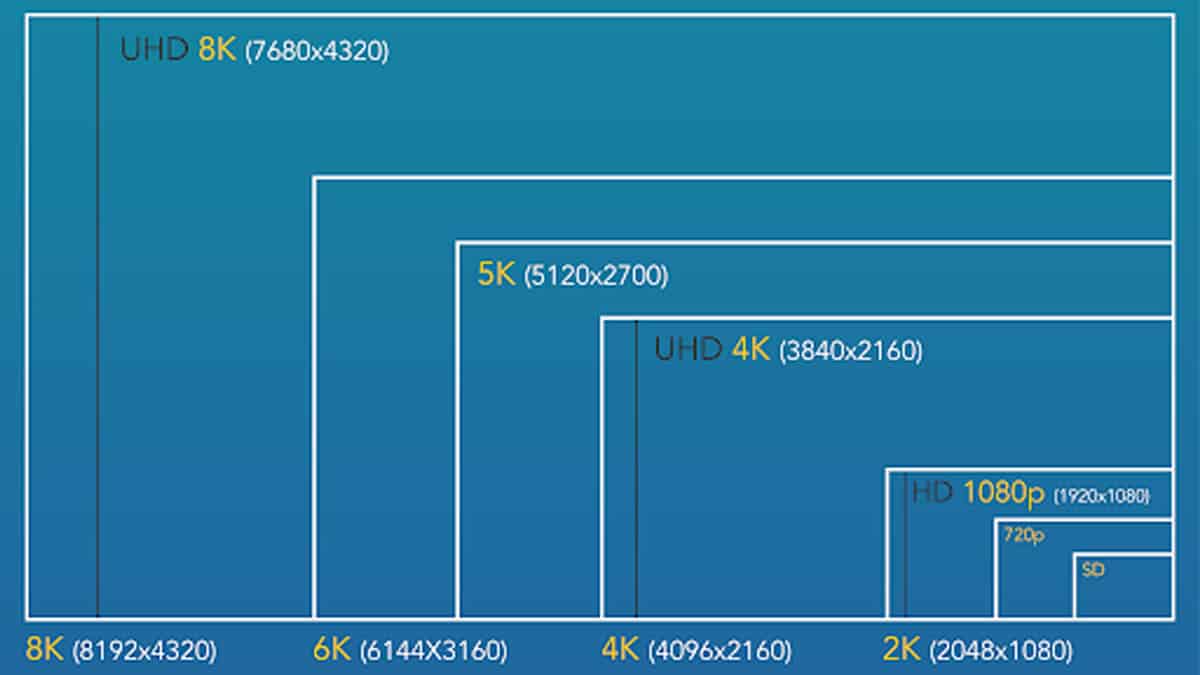As a video data analyst, it doesn't matter whether you're looking at coral reef or discarded haddock, every pixel counts. In upcoming versions of Tator higher video quality of 4k and 8k are unleashed for analysis. While maintaining frame accurate playback, between multiple sources, video sources can now scale up to 8k resolution.
 Figure 1: Comparison of common video resolutions
Figure 1: Comparison of common video resolutions
Bandwidth Optimization
Multiple approaches to optimizing this experience for users are incorporated:
- Tator's unique multi-resolution playback experience is well suited to 4k experiences. Users can playback at a resolution best suited to their computer and network resources, but fetch a 4k still upon pause.
- Overall system utilization has been improved. This gives computing margin for the millions of additional pixels being utilized in the display.
- Advanced codecs such as av1 can be utilized to compress high bitrate content to minimize storage and transmission requirements.
Video 2: Example of Tator playing a 4k Source. Sample utilized Free Stock Video by Videezy
Technical Details
The implementation switched the video decoder stack from using Media Source Extensions to WebCodecs. Browser support for the new WebCodecs API is currently being rolled out, currently Microsoft Edge and Google Chrome provide the most standards compliant implementations. This change allowed for a lower-level control of the video stream, a more performant implementation for frame accurate operations, and lays a foundation for more advanced features.
System utilization was substantially reduced for running the video annotation page. Playback of sources up to 60 fps at 4k resolution are possible in the platform.
